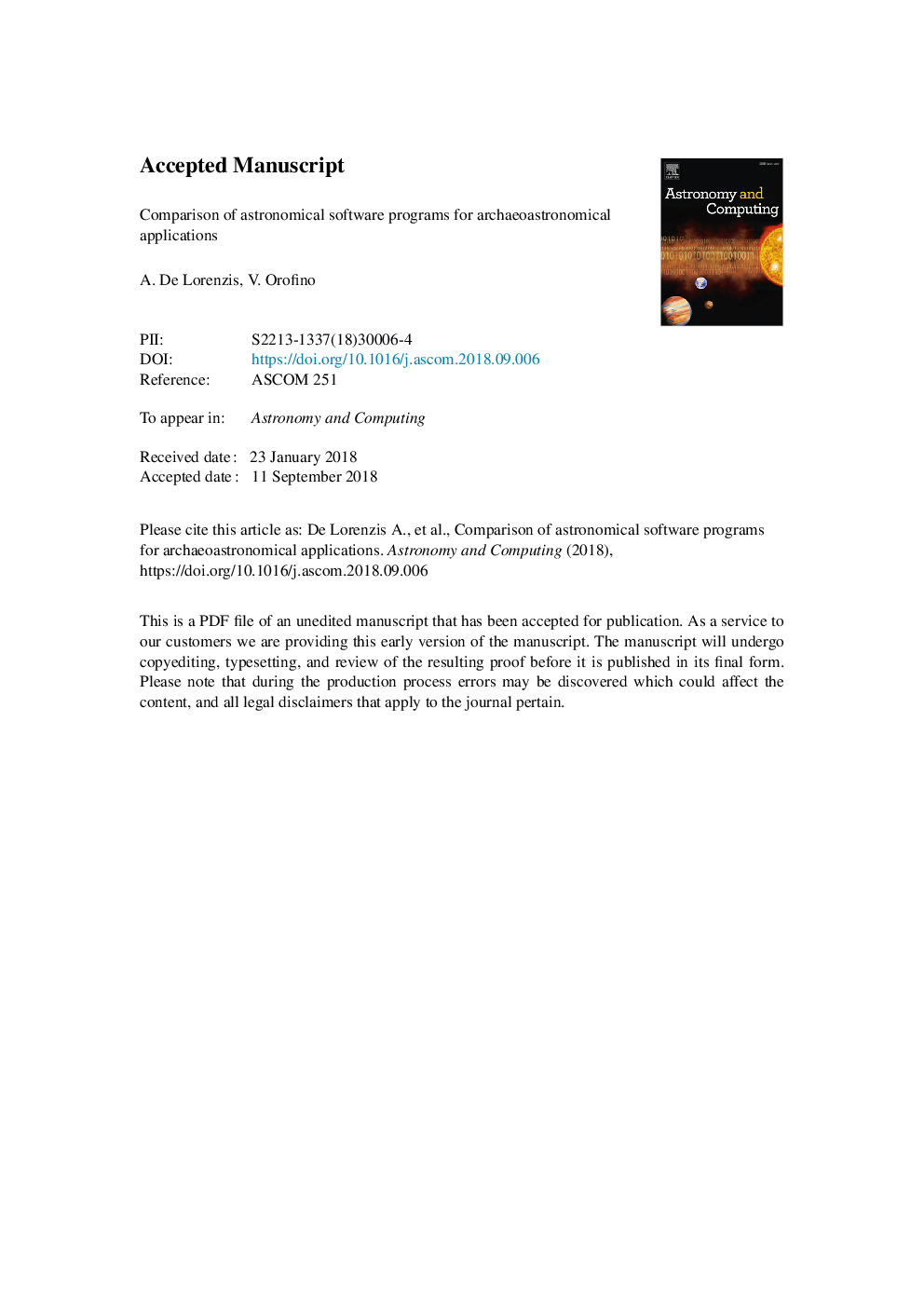| Article ID | Journal | Published Year | Pages | File Type |
|---|---|---|---|---|
| 11031577 | Astronomy and Computing | 2018 | 42 Pages |
Abstract
The present work compares the principal commercial astronomical programs currently available with the goal to determine how correctly they evaluate the two aforementioned mechanisms. The comparison is carried out on a sample of 24 stars (among the brightest in the sky) using a subroutine which carefully evaluates the two phenomena. A discussion on the principal methods used to approximate precession is also given. The differences observed between the values of declination calculated with various approximations, as well as those between different astronomical software programs, may even exceed one degree, a value that is far beyond the resolving power of the human eye, making the evaluations and the consequent conclusions unreliable. Furthermore, via a reconstruction of the temporal trends of declination in the interval [25000 BC; AD 25000] for two stars with the highest (Toliman, α Cen) and the lowest (Mintaka, δ Ori) proper motions, the consequences of this effect on the stellar position are evaluated. Finally, as a consequence of the presented evidence, we test some alignments towards the brightest stars of the sky proposed for some enclosures of Göbekli Tepe, the most ancient megalithic site in the world.
Related Topics
Physical Sciences and Engineering
Computer Science
Computer Science Applications
Authors
A. De Lorenzis, V. Orofino,
